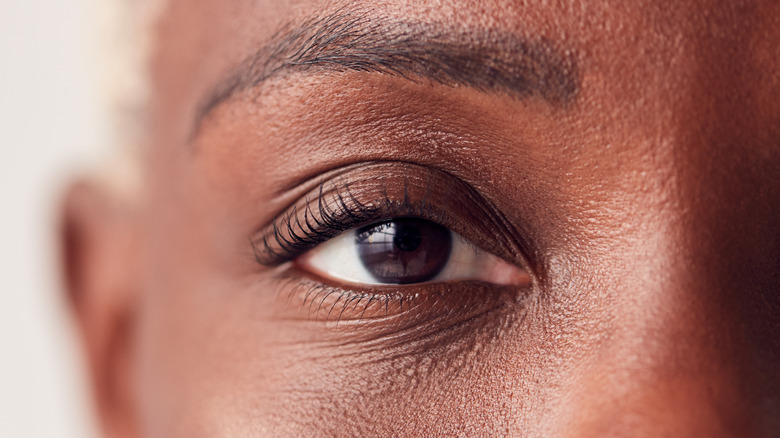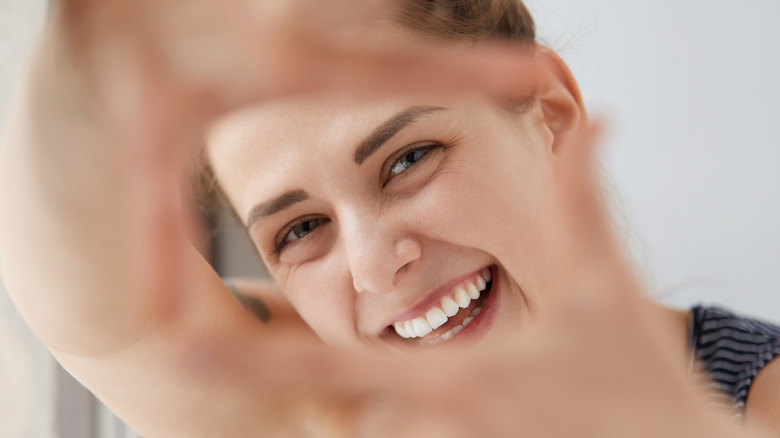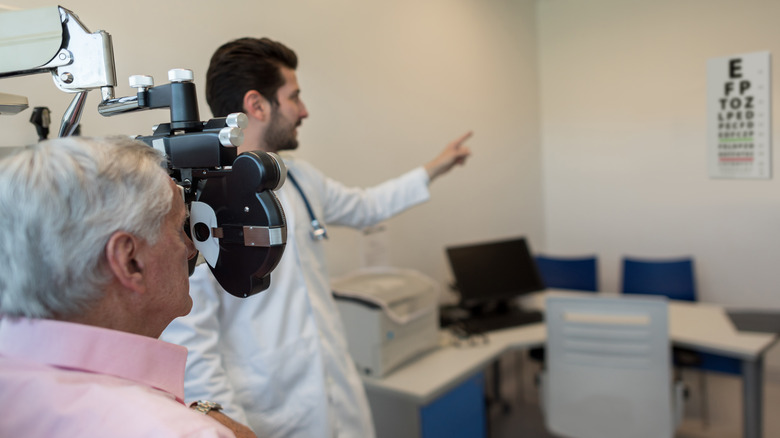What Your Dominant Eye Does And How To Find It
If you utilize one hand more than the other for everyday activities such as writing, throwing a ball, or brushing your hair, you're using your dominant hand. Interestingly, this concept of dominance also applies to our eyes. Much like our dominant hand takes on the brunt of the work when it comes to these fine motor tasks, one of our eyes handles more of our ocular functioning than the other (via Archives of Ophthalmology).
In some ways, we can think of our dominant eye as the boss, while our non-dominant eye acts as the assistant. In other words, your non-dominant eye supports the functioning of the dominant eye, but with the dominant eye ultimately calling the shots. Your dominant eye may get used more frequently, have stronger vision, or maintain sharper focus than your non-dominant eye, reports WebMD. Essentially, if you ever find yourself playing a game of darts, you're better off using your dominant eye to try and hit the bullseye.
Try the triangle test to find your dominant eye
Now that we know our dominant eye takes on more responsibility when it comes to our sight, how do we know which one of our eyes is which? As it turns out, you may be able to look at your dominant hand for a clue. WebMD reports that most often, a person's dominant eye will be on the same side of the body as their dominant hand. While this is not always the case, if your left hand is dominant, for example, there's a good chance that your left eye is also the dominant one.
Alternatively, there are some easy DIY tests you can try out for yourself to help find your dominant eye. For example, experts at Kugler Vision suggest forming a triangle-shaped gap between your hands by touching your pointer fingers together to create the point of the triangle and placing your thumbs together to create the base. Hold your arms out in front of you and focus your triangle on an object farther away from you, almost as if you were going to take a snapshot of it. While looking at the object through the triangle, close one eye before slowly switching and closing the opposite eye. Between your two eyes, you'll notice that the object either remained within the frame of the triangle or jumped out of frame. Your dominant eye is whichever eye was open when the object stayed in the middle of the triangle.
The pointing test and professional eye exams
A similar test that you can self-administer to determine your dominant eye involves pointing directly at a distant object rather than looking at it through your hands (via Kugler Vision). Much like the triangle test, first close one eye and then switch. You'll notice that the object will either stay in place or jump to one side of your finger. Depending on which eye you have open, if your pointer finger remains squarely in front of the object, that is your dominant eye.
Sometimes, however, a more professional assessment may be required. This can be the case for those who may have cataracts, crossed eyes, or a lazy eye (per WebMD). Many eye specialists will use what's known as the +1.50D blur test. According to a 2012 study published in the Journal of Optometry, the test involves asking the patient to look at the smallest line of text they are able to see clearly on a letter chart. The specialist then alternates placing a lens in front of each of the patient's eyes to determine which prompts a blurring effect on the line of text. Should you have any concerns about your vision health, be sure to speak with your eye doctor.



